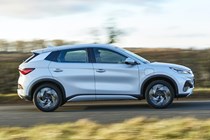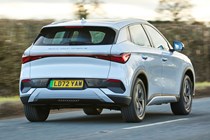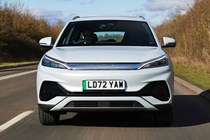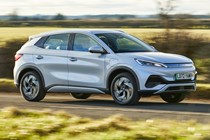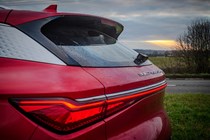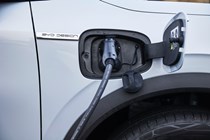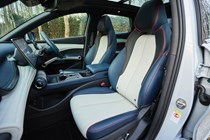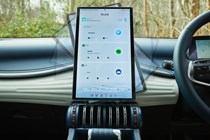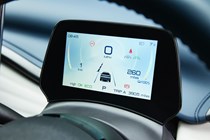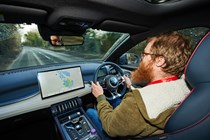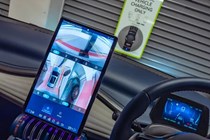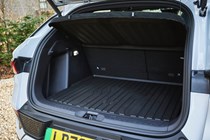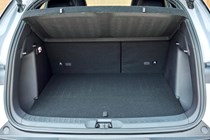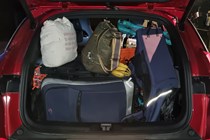
BYD Atto 3 long-term test
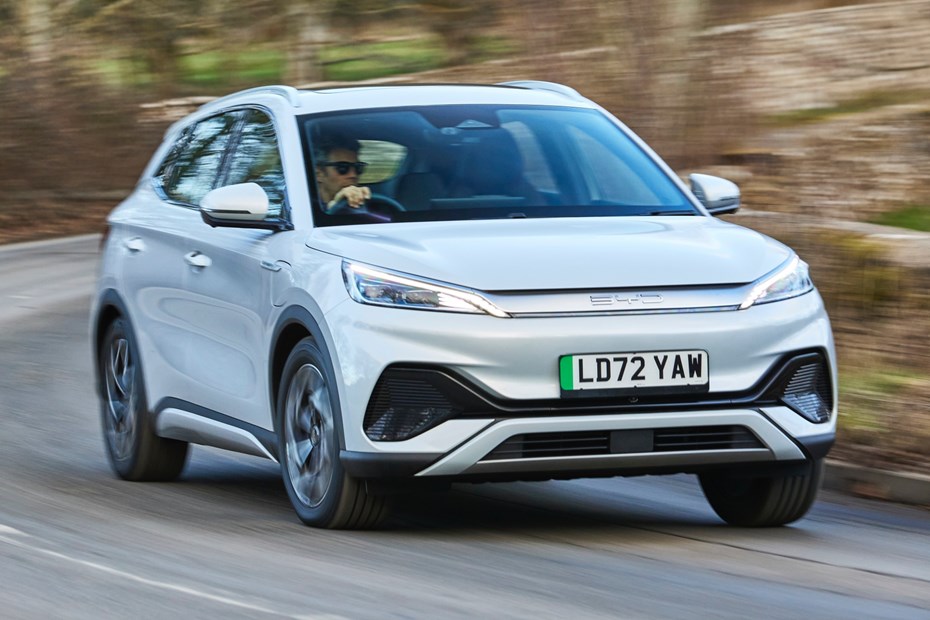
There are plenty of family friendly electric SUVs out there, but what if you’re on a budget? With even well-equipped top-spec cars costing less than £40k, the BYD Atto 3 seems a tempting choice, but is it any good? We press one into service as a family car to find out.
Reports by Alan Taylor-Jones.
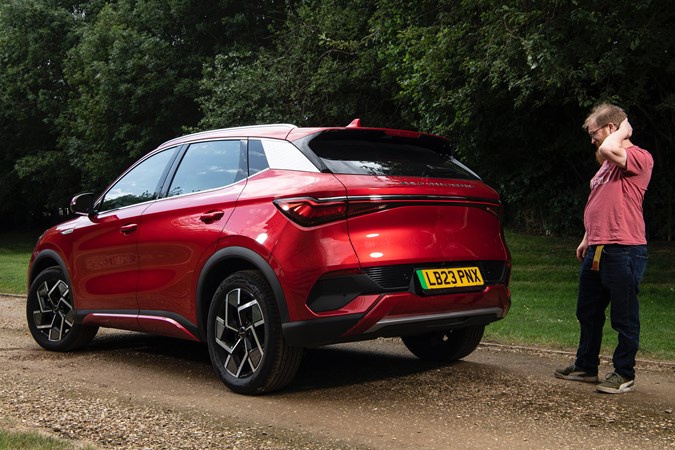
Update 1: Hello
Introducing the BYD Atto 3 Design
It’s not often we get to welcome a new car manufacturer to the UK, but the Atto 3 marks BYD’s first serious assault on the UK market. It’s had a while to practice first while becoming one of the world’s largest producers of electric vehicles whether they be cars, buses or even trains.
If you’re wondering what BYD stands for, you just need to stroll around to the back of the Atto 3 or its smaller sibling the Dolphin hatchback. Here you’ll find ‘Build Your Dreams’ boldly written in chrome, or at least you will for the moment. After feedback from buyers, dealers and journalists (including yours truly), its maker has decided the Seal saloon will instead get a more discreet ‘BYD’ badge. Much less ‘live, laugh, love’ and all the better for it.
But back to the Atto 3. If you’ve not been paying attention during the rest of the review, it’s a five-door SUV that’s around about the same size as a Kia Niro EV but for a few thousand pounds less once you take into account specification levels. It’s no budget offering like the MG ZS EV, with exceptionally high levels of standard equipment, lots of tactile materials inside and reasonable levels of space.
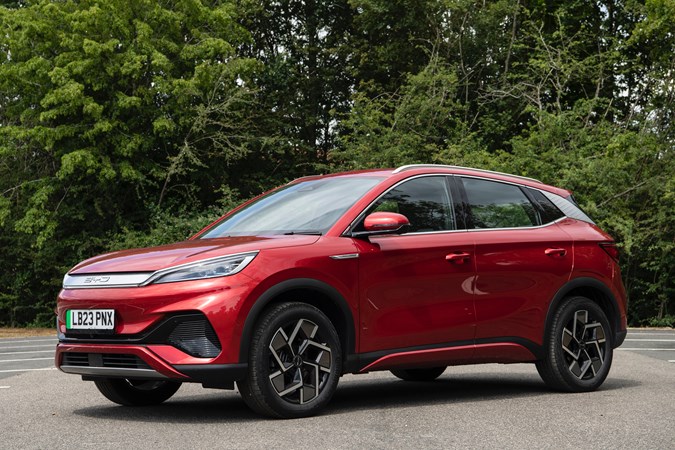
My long termer is a top-spec Design model that comes with a 60.5kWh battery and 204hp electric motor that powers the front wheels like all Atto 3s. The 260-mile range should be more than sufficient for the relatively short trips we generally do, although a family holiday travelling from Norfolk to Devon will be revealing. It’ll certainly test the Atto 3’s ability to rapid charge at 88kW, a figure that is a little disappointing compared to some rivals such as the slightly larger Volkswagen ID.4.
What you get with an Atto 3 Design
No Atto 3 is poorly equipped, with entry-level Active trim getting virtually everything besides the Comfort model’s 11kW charger. This will only really be of use if you regularly have access to a three-phase charger, potentially at your place of work. Most home wallboxes will be able to satisfy the Active’s 7kW charger. The rest of the kit list includes:
- Metallic paint
- Opening panoramic sunroof
- Automatic LED headlights with auto main beam
- Six-way driver and four-way passenger electric heated seats
- Two front and two rear USB ports
- Multicolour ambient lighting
- Auto-dimming rear view mirror
- Climate control
- Wireless phone charging
- 5.0-inch digital instrument cluster
- 12.8-inch rotating(!) touchscreen infotainment system
- Eight speaker stereo
- Apple CarPlay and Android Auto
- Blind spot detection
- Auto handbrake
- Adaptive cruise control with lane assist
- Traffic sign recognition
- Intelligent speed limit information and control
- Automatic emergency braking
- Rear cross traffic alert with brake
- Front and rear parking sensors
- Surround view camera
- Two rear and one front passenger seat Isofix
- Adjustable height boot floor.
It’s an awfully long list, albeit one that does without auto wipers. Given our weather, it’s something you quickly miss. Apart from that, there really is very little for my top spec Design trim to add, although it is only £2,500 more than base trim. The additional kit list for Design is mercifully much shorter than the one above:
- Electric tailgate
- Slightly fancier ambient lighting
- An air purification system
- A 15.6-inch touchscreen
- 11kW charger.
Of that list, I’ve only really appreciated two of the items on a regular basis. The electric tailgate is always handy even if it isn’t gesture controlled, and the 11kW chargers at work mean quicker top ups than at home. The screen is arguably too big, blocking off a bit of your view when in portrait mode. Not that you can use portrait mode with CarPlay or Android Auto anyway.
As long as I can select a warm orange ambient light, which I can, I won’t bother playing with the other settings, while the air purification system certainly doesn’t help the car get cool quickly on hot days. Instead of slowly ramping up the fan as the air con gets to work, it blasts you with hot air until the flow can be chilled. It’s most unpleasant, although being able to open the windows from the key fob helps.
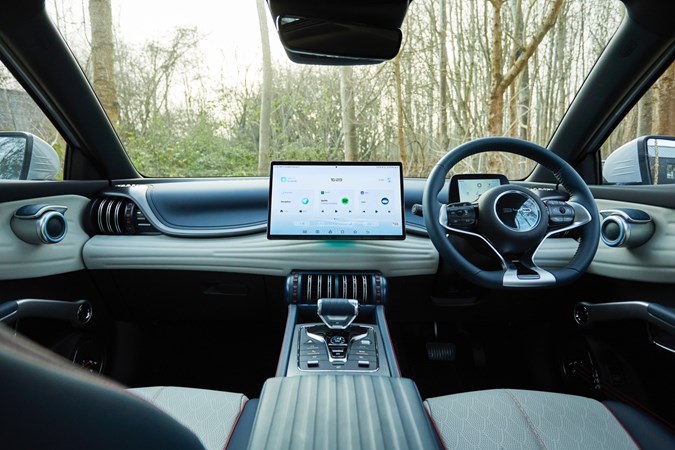
My initial impressions are somewhat mixed. Acceleration is strong, although you can feel the steering wheel writhing in your hands if you really put your foot down. This is especially pronounced on heavily cambered roads, of which there are plenty in the Fens. It’s not uncomfortable as you lope along on the soft suspension, but it’s a very different sensation to the tightly damped suspension of European rivals.
It’s not particularly sharp in the bends as a result, but that’s fine when my wife and son are in the car. Here, I’m more interested in whether our pushchair goes in with the parcel shelf in place (it doesn’t), and whether there’s enough room in the back to accompany our son if he’s cranky (yes, but I am very short). Time to pile on the miles to find out more.
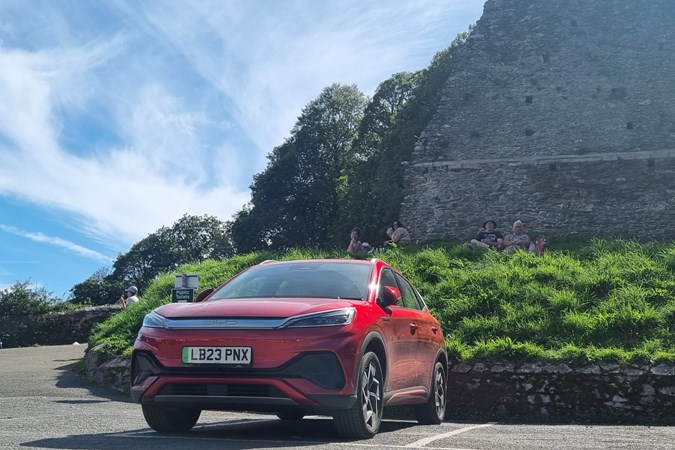
Update 2: Fear and range anxiety in East Devon
As I mentioned in my first report, a family holiday in Devon would put the Atto 3’s long distance capabilities for the test. The trip from our home in Norfolk to Dartmouth is over 300 miles, beyond the capabilities of the car’s 60kWh battery. A single rapid charging stop should do the job in theory, so it was just fitting in all of our stuff inside to worry about.
The boot was soon filled with a pushchair and cases, while the rear passenger seat had to be folded in part to accommodate our son’s high chair. Before long we’d filled all other available spaces and a reasonable bit of my in-laws’ boot, too. In other words, you’ll probably want to consider a roof box if it’ll be a family car, especially if you’ve got a couple of kids or a tent to worry about.
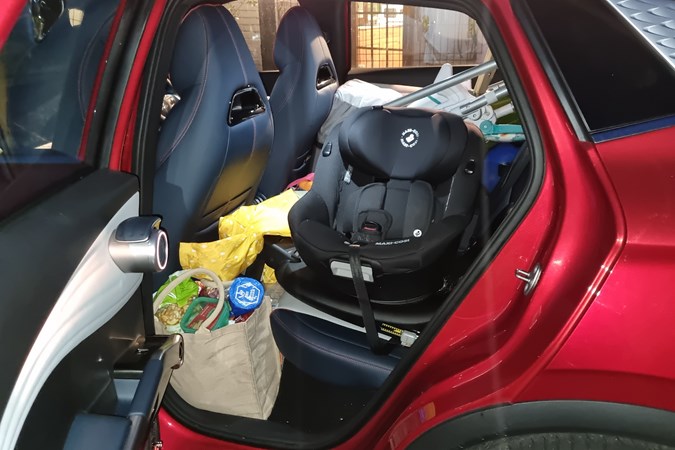
The next morning we decided to get as far as possible while our son was still sleeping, which wasn’t quite the distance we’d hoped. However, it looked like we’d make it once topped up so I didn’t factor charging into our next couple of stops. At the last of those near Newton Abbott, it looked like we had a reasonable 10 miles in hand. Knowing electric cars generally have a bit of a reserve as well, we went for it.
As we dropped below 20% charge, power was reduced. This wouldn’t be much of a problem in Norfolk, but the hills in Devon are a much tougher test. We were soon crawling up inclines watching the range dropping to six miles, still enough to get us to a rapid charger. Ignoring the 0% battery charge we pushed on until the range suddenly showed zero and the motor stopped.
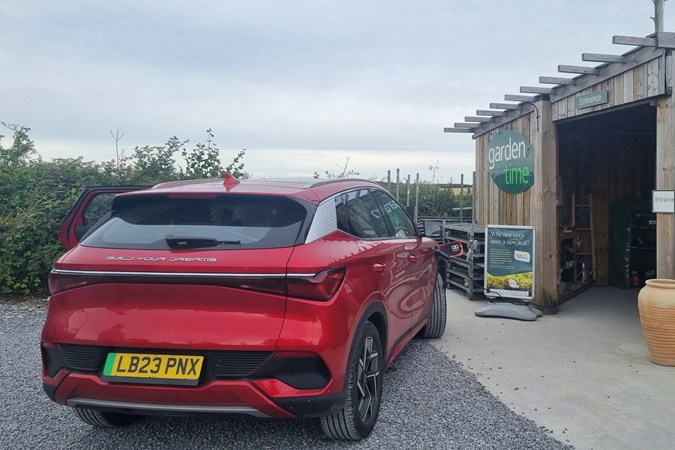
There was no countdown as you’d expect, and although the Atto 3 could be turned off and on then driven a short distance, the charger was well out of reach. Thankfully I spotted a garden centre to limp into, the kind staff allowing me to charge just enough to crawl to a proper top-up. A very lucky escape.
Now, I know I shouldn’t have risked it. A different stop and 10 minutes of rapid charger would have made for an uneventful journey, but a more pessimistic range indicator or at least one with a proper countdown would be welcome. Instead, we could very easily have been stranded.
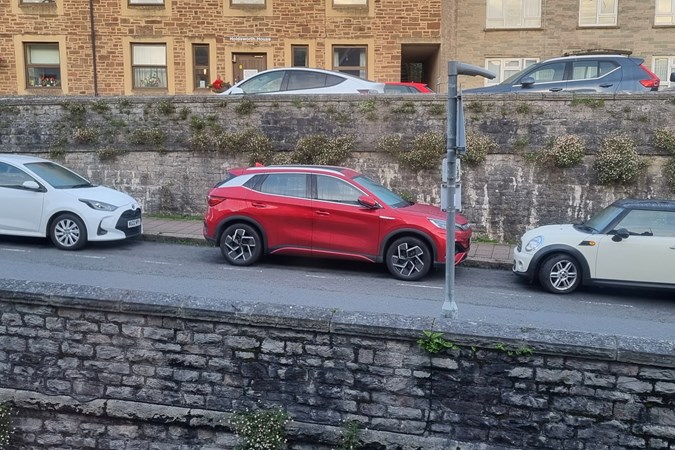
Knowing six is the new zero ensured the rest of the holiday was plain sailing, albeit one that required some time prowling for public chargers. Finding some was never an issue, it’s just that you often had to wait for another car to finish. Dartmouth’s main carpark has two 7.4kW chargers, while other tourist spots were similarly equipped.
Motorway services always had rapid chargers, but one required a 20 minute wait for someone else to finish. At least other EV drivers seem a friendly bunch, let’s hope for their sake (and I suppose mine) that the infrastructure to support them gets a big boost.
Efficiency was good, but did nosedive somewhat at motorway speeds. Even so, around 3.6 miles per kWh is by no means a bad score and still gives a theoretical range of 216 miles. A faster rapid charge rate would have also have been welcome, but only a couple of chargers we visited would have supported it.
Has this put me off EVs for long distance trips? Not at all, if anything it’s highlighted how they’re quite well suited to family life. Our son required breaks far more often than the Atto 3 so as long as we stop somewhere that has rapid chargers, we may never have to worry about range anxiety again.
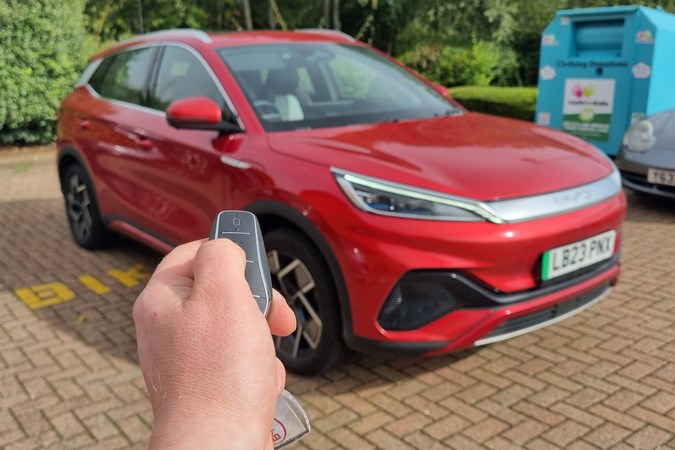
Update 3: Fobbed off
While this report was supposed to be entirely about the interior practicality, we’ve had some issues accessing it this month. The first sign of trouble was a refusal to lock once my wife had reached work. Even using the physical key that’s buried in the fob didn’t work.
Thankfully the school has a gated carpark that’s locked during the day, although I suspect she’s in the minority. Leaving it unlocked and hoping for the best isn’t really an option in a public multistorey or when street parking.
Thankfully the car recognised the fob at the end of the day, allowing her to get in and drive home where naturally it worked perfectly. A few days later I noticed I couldn’t open the boot remotely and it wouldn’t always unlock on the first attempt. The LED light was flashing and the car’s nearly new, so I assumed it wasn’t the battery so called BYD to report the issue.
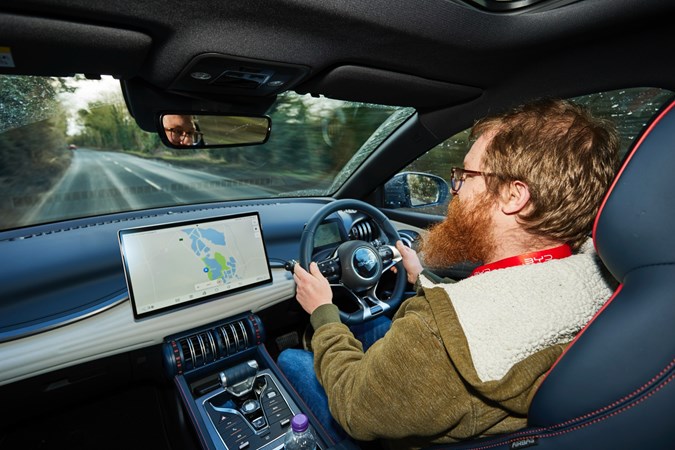
With the dealer network still small and my nearest dealer over an hour’s drive away, I was pleased when it was suggested they pick it up and leave us with another while they worked out the issue. In the end, it was just a flat fob battery. I can only assume this was a faulty item, so I’m happy to forgive the Atto 3 on this occasion.
So, on to practicality. Space up front is certainly plentiful with excellent headroom despite the panoramic roof, a wide central armrest and seats that go back a long way. The electric adjustment is handy, although a memory function for the seats and door mirrors would make switching between drivers a little easier.
With a toddler often in tow, oddment storage is vital. Up front, there’s a useful cubby underneath the central armrest, cupholders that’ll take Costa’s largest or a baby’s bottle, and a large if rather shallow tray below the centre console. A conveniently placed wireless charger lets you make the most of the wireless Android Auto, although Apple CarPlay is sadly wired.
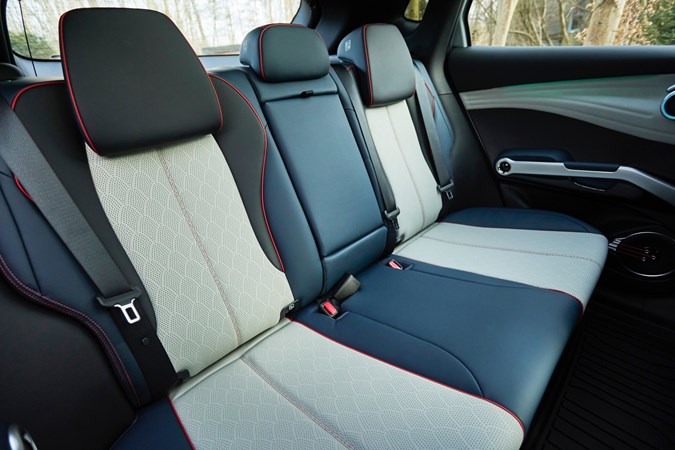
Even the door pockets that mainly consist of bungee straps proved to be more than just a gimmick, holding a glass water bottle with no fear of it springing out and breaking as you open the door. A couple of restless teenagers will twang them happily for an entire car journey, though.
Rear seat accommodation has for the most part been up to the task, too. Head and legroom will be sufficient for most and the Isofix mounts are easy to access. A flat floor helps when squeezing in three, but it’s a bit too narrow for two adults and a child seat to be comfortable on long distances.
When travelling in the back with my son, I’ve appreciated the fold down armrest with a couple of integrated cupholders. Not only does it boost comfort, I can store my phone and a drink in the cupholders whilst balancing snacks on the bit I’m not leaning on. I have ended up flinging rubbish from the door pocket when opening the door though, the items slipping between the strings.

Our biggest issue is the boot. In most scenarios it’s fine, especially if we’re using a stick buggy rather than a bulkier pushchair. However, with the purchase of a large tent for holidays and a large battery-operated ride-on a gift for our son from his doting grandparents, it’s just not big enough anymore.
To be fair, it’s an issue we’d almost certainly have with direct rivals such as the Hyundai Kona Electric, Kia Niro EV and Peugeot e-2008. However, in my experience those cars’ boot linings are made of tougher stuff, our Atto 3’s load area sides are made of flimsy plastic that marks very easily.
And with that, the Atto 3 is off to our used cars editor Richard Kilpatrick for the remainder of its time with us. Given his northerly home address, the BYD’s standard heat pump will have its work cut out over winter.
Update 4: manifest destiny
You know that Bryan Adams song? No, not that one. Summer of ’69. It feels like that’s how many long-termers I’ve had this year, after my Dacia Sandero Stepway was needed elsewhere and I got to enjoy short stints in everyone else’s cars – that is, until I got to say nǐ hǎo (你好) to the BYD Atto 3.
I only have myself to blame. While working on a short story set in China, learning Mandarin seemed to finally have clicked after 15 years trying – and I’d discovered some brilliant music on Spotify in the process from artists like Leaf Yeh.
Clearly I’d put so much energy into wanting to understand and relate to one of the worlds’ largest cultural influences that the universe had responded – by sending me the most popular EV from the first Chinese brand to make a big impact in the UK.
That’s ignoring MG, which retains many British associations, and skipping over the fact that a significant percentage of European, American, Japanese and British cars are built on tech made (and designed, more recently) in China.
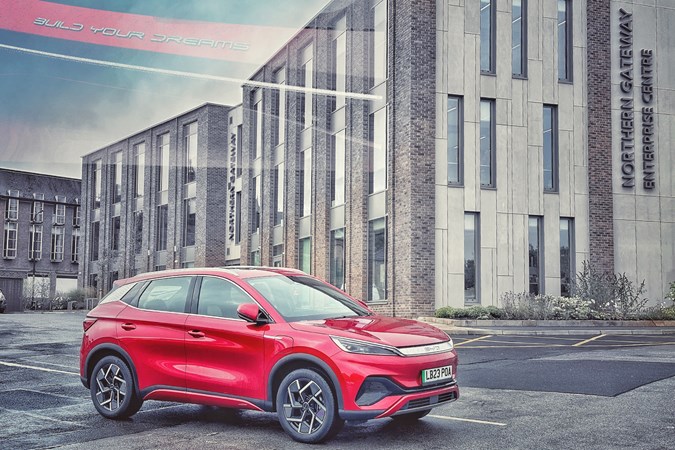
My esteemed colleague has already covered a lot of the facts and capabilities of the Atto 3, so this update is more of a ‘first impressions’ from someone who has only lived with one long-term EV before. Now I live in a less remote location than East Lincolnshire, and there’s a motorway, actual roads and a reasonable number of charging points – so driving an electric car with an over 200-mile range shouldn’t be a problem, right?
The first 24 hours: volts, why hath thou forsaken me?
Logistics meant I got the Atto 3 with slightly less than half a tank in old money. A range of 100 miles should be no problem, but my first attempt at charging was an exercise in discovering why you should use Zap Map. The Osprey fast chargers in Clay Cross didn’t work, and I’d lost 20 miles learning this – in desperation, Tesco’s no-longer-free 7kW units were explored, but the car was also asking for a software update.
Do not, under any circumstances, decide to update the software when you want to charge or drive anywhere. Do it at home. That’s really all you need to know – it really does take as long as it says and it warns you before you agree, though I’m surprised it can’t charge while doing it.
As a backup for long drives I bought a £500 Mercedes SLK, and figured I’d drive the seller home (25 miles away) in the BYD, knowing I could charge on the M1. That also did not go to plan. Purely chance, but with a worrying 11 miles or 4% remaining I discovered Gridserve’s payment gateway was broken. It took 40 minutes on hold to customer services, and before the car was fully charged the two hours parking was up – but I was back on my way home.
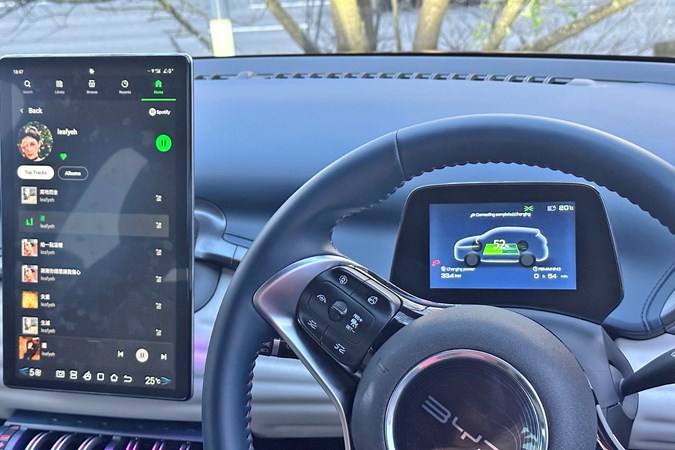
They did enable free charging and the Atto 3 regains range fairly quickly on a fast charger – while the Atto 3 has a lower kW charging rate than than many rivals, a lot of public fast chargers rarely deliver the full charging capacity, especially if there are several charging points at the same location.
Once I had installed Zap Map (on my phone – it doesn’t look like you can add it to the Android-based infotainment, annoyingly) the following couple of weeks were straightforward. Pop into town, find a charging point, plug in – I always had plenty of range for commuting-style use but for longer trips having a cheap petrol car saved me an hour every 200 miles, and even at 36mpg works out a little cheaper than many public chargers.
Wallbox-ing clever: Evec VEC01 mini review
How much is a wallbox? Not a lot it turns out – Evec’s VEC01 is £799 including installation before any applicable grants, and aside from needing an isolator added to my meter (a £98 fee to the network) it was installed by Ascent Energy swiftly, tidily and where I wanted with minimal disruption.
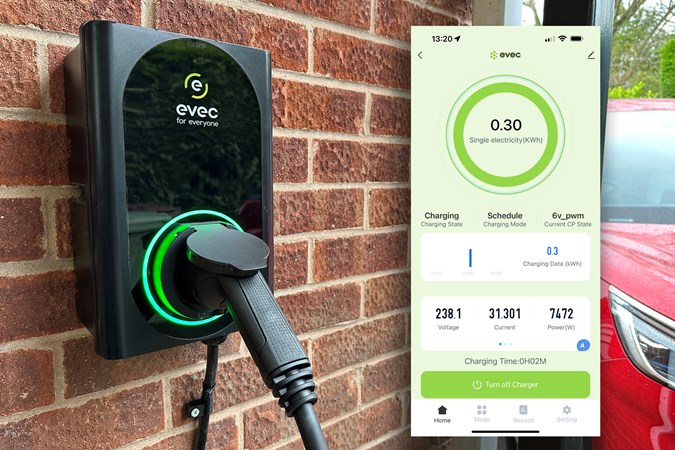
The VEC01 box has a WiFi connection to your home network which allows online control via a relatively simple app, and tracks how much power the car has taken both per charge and as a rolling total. Scheduling can be used to disable charging at on-peak times, and it’s simple and effective.
The provided cable is a little short for my preferred way of parking, but part of that is down to the Atto 3’s front-wing charging flap. Not included, but very cheap to add, a Type 2 wall hook tidies up the cable when not in use.
Although 7kW doesn’t sound a lot, it’s enough to plug in after a morning set of errands if the BYD’s showing less than 100 miles, and find that by mid afternoon it’s close to 200 miles. Letting it sit for a full charge allowed a quick run to Whitby from Derbyshire, with plenty of leeway to find a Starbucks with Instavolt to top up for the return trip.
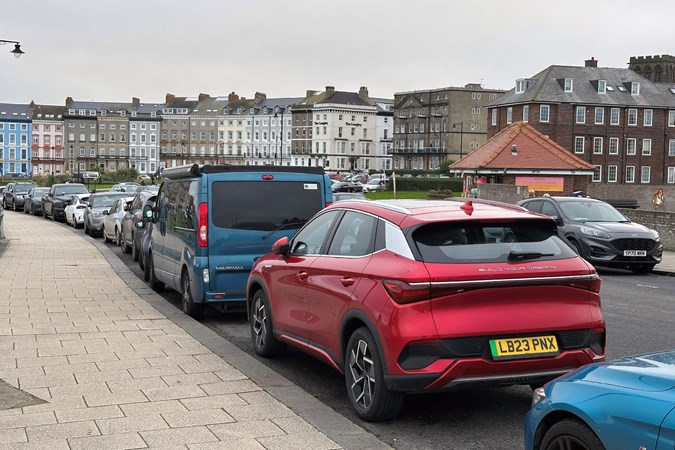
Home charging transforms how I use the Atto 3. Now I just take it for going into town or whizzing around the county without worrying, and while public charging remains expensive there are EV tariffs that would cost a tenth of the most expensive public rates if off-peak charging is used.
I’m fortunate to have solar, but only around 3.6kW on a good day. If I had more capacity the VEC03 costs £200 more and can automatically switch to using solar energy directly, only drawing from the grid when the panels aren’t generating power.
There is no doubt at all that Britain’s infrastructure and assumptions around car usage – such as the reliance on on-street parking, and the chance of a busy motorway services with a two-hour parking limit having just four chargers which may or may not work that day – are a serious issue. It’s probably the biggest barrier after ‘the cost of a new car’ for the majority of commuters and workers who would benefit the most (and create the biggest pollution benefit) by having an EV.

Getting a wallbox installed is essential if you’re using an electric car for regular commutes – if you have the space and freedom, at least – even if you’ve convinced yourself public charging will be okay. Evec’s unit has a purposeful, industrial look and is well made, and despite the 15m distance to the fuse box consistently delivers 7kW charging. The only downside I’ve found is that it looks like you can’t dim the rather bright LED ring.
Atto 3 first impressions: personality goes a long way
In the first month with the Atto 3 I’ve found myself unpicking a lot of my established preferences for cars. In pictures the curvy, quirky interior isn’t something I’d choose, but using the car I’ve become quite attached to the colours and flowing shapes, and I’m dreading going back to dull straight lines and charcoal plastics.
The tech feels about 85% of the way there – the absence of auto wipers confuses me, the lack of wireless CarPlay never makes sense when there’s a wireless charging pad, and it seems to be difficult to get set up with a phone app for remote control, or enable mobile data so features like Spotify work using the car’s on-board SIM rather than having to connect bluetooth tethering every time.
It also seems wrong about the speed limit a lot of the time, which isn’t helpful if you have warnings on.
Countering that, the voice control is delightful, and I rarely bother with buttons for opening the windows or sunroof/blind. I had hoped that I could set it to Mandarin, having learned the right phrase for ‘open the sunblind please’, but it’s firmly European in the selection of voices and languages for the infotainment.
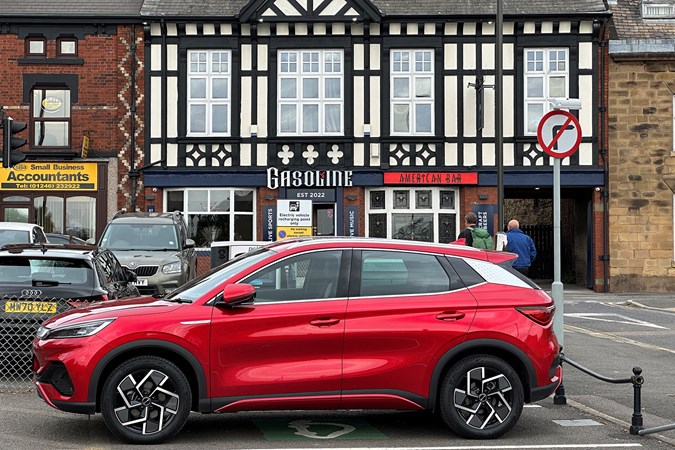
Even so, the gentle ‘you’re going pretty fast, I’ve opened it half way’ when asking to open the sunroof at 27mph is endearing (and inspired a haiku about new relationships), and it also does things like reminding you to switch the auto lights back on if you’d turned them off and it’s dark. The rotating dash even has a purpose – you get to see more of the surround cameras in portrait mode.
That 85% applies to the ride and handling too. In bad weather it sometimes scrabbles for grip pulling away from junctions, despite the Continental tyres, and it has a slightly unsettled attitude in stormy crosswinds. It feels a lot like mid-2000s American chassis tuning with European damping, and the trade off is a pleasant, smooth and quiet motorway ride.
Given the number of motorway drives I do, I’ve not held back or modified my driving and with the dynamic range indicator turned on the estimates are accurate. For an affordable EV with a relatively small battery, the BYD Atto 3 is quite impressive.
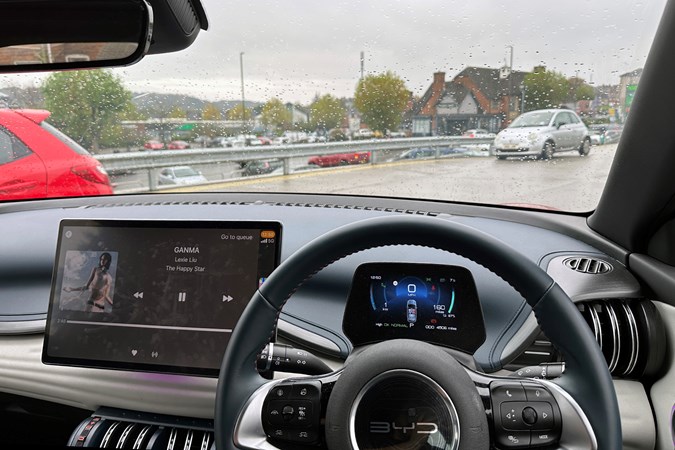
As we approach winter, range estimates and real-world results seem less affected by cold than EVs I’ve used previously, and even with mostly 70mph runs and no care given about turning the heater down or closing the window all the time I’m still seeing over 200 miles in Sport mode, 225 in Eco.
For drivers mostly commuting in 20-50mph zones the Atto 3 could fit in to most lifestyles even without a wallbox, if more supermarkets and shopping centres installed fast chargers. As frosts begin to fall, I hope the range remains as impressive (for the size of battery) as it has in Autumn.
At least it’s possible to precondition the interior from the key.
Update 5: charging ahead – the Atto 3 goes to Scotland
Any experienced electric car owner will tell you successful long-distance drives are about planning. From my house, to my family in Scotland, is 270 miles and almost five hours, and in winter at motorway speeds, the BYD gives me 213 miles as a range estimate. Normally I’d do this drive with a stop in the middle anyway, so I just plan for one of the fast chargers (not the busy ones). Given it’s the weekend before Christmas I expect heavy traffic and it’s quite the opposite, with faster motorway speeds than I’ve experienced lately.
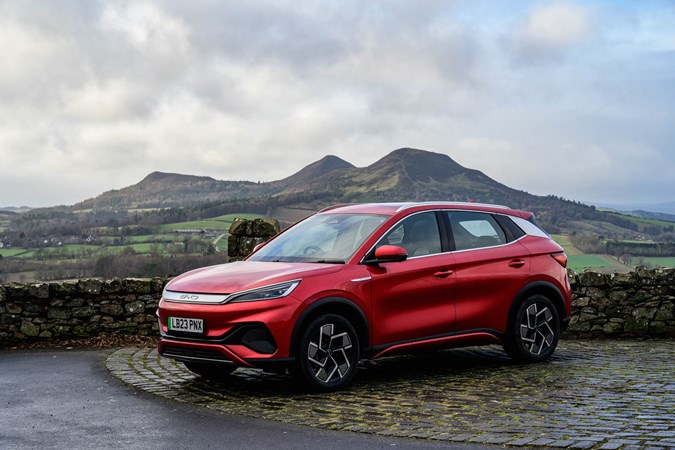
No concessions made for electric power, I keep up with traffic and reach Durham with 60 miles remaining – almost bang on 200 miles of fast motorway driving range, not bad for a single-speed gearbox EV at this price and battery capacity.
Unfortunately my plan is derailed by Durham services’ Gridserve charger only delivering 28kW for a shocking 79p per kWh, and a desire to be in Edinburgh while shops are still open. Once through the bottleneck at Gateshead, the Atto 3 is directed towards the Borders through Wooler, where Apple Maps tells me there’s a high-speed charger with lots of positive reviews.
Open roads: living the dream, or the dream, living?
Leaving the A1 and taking very familiar roads towards Coldstream, I get to do something rarely possible in Derbyshire. The Atto 3 is on fast, wide roads with sweeping curves, crests and bends, all NSL, and in a wonderful landscape. But first, another predictable sight – a queue of cars behind someone gingerly driving at 35mph in a 60mph area with good visibility. No-one seems confident, so I wait for the next straight and overtake all four ahead of me at once.
Much to the chagrin of the BMW behind me which has tailgated solidly all the way from the sliproad as if I’m the one choosing the speed, yet made no attempt to pass.
Overtaking safely is a major point in the BYD’s favour. A lot of similarly-priced electric cars simply don’t have the punch to pass like that confidently, running out of thrust when asked to sustain acceleration past a couple of slow vehicles. I expected the BMW to follow, as the road was clear, but it wouldn’t catch up for several miles despite my sticking to the speed limit.
It’s very different to the cold-weather, rutted-road experience in the Peak District and I suspect if the temperature were below 7-10 degrees, I’d feel some of the familiar scrabbling I encounter on roads closer to home.
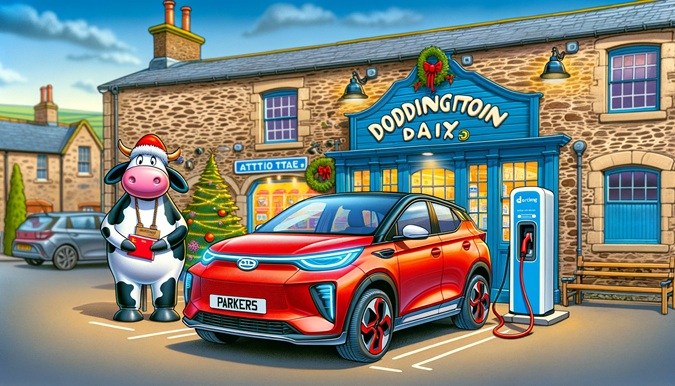
Driving like this, you can see the impact hills, deceleration and acceleration have on the range, and I’m glad I chose to top up to 80% before the final stretch to Edinburgh (if you’re wondering why I didn’t take the A1 all the way, it was closed, but I like the Wooler road anyway).
Once in Edinburgh the plan is simple. ‘We’ll meet under the Golden Jobbie’ is shorthand for the revamped St. James Centre, reached by running the gauntlet of the gyratory at the top of Leith Walk, where road signs and markings have lost all meaning. The careful work of town planners is ripped to shreds by drivers deciding right-turn lanes can mean straight ahead – as long as it only inconveniences or endangers someone else.
The Atto 3’s high driving position and chunky build feels apt here, though the trams look less stressful.
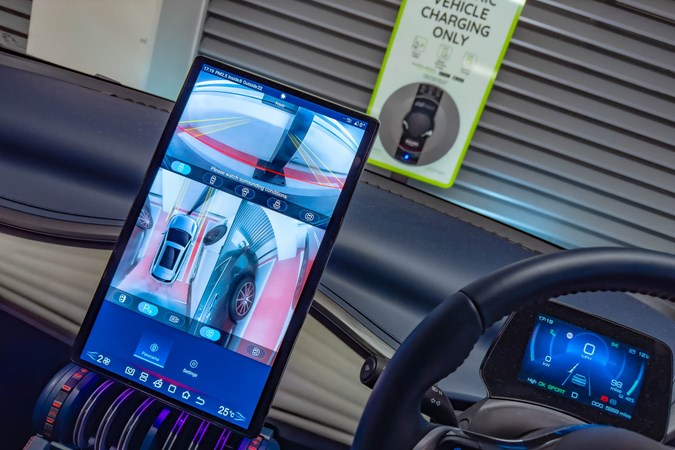
Beneath the copper-coloured twisted turd, complete with pinched off point peeking over Auld Reekie’s skyline, is a bright, clean and spacious car park. It has banks of 7kW EV chargers from PodPoint, running moderate 44p per kWh cost. The bays are surrounded by bright colours, encouraging considerate parking, but the nose-first BYD means the cameras are essential to miss a concrete pillar to the left and a Taycan to the right.
Reaching Newcastle with 20% the Gosforth Park services near Wideopen beckon. Perfect. I get 100% in the time it takes to enjoy a coffee and un-rushed lunch, and think that’s it for the drive home. Motorway speeds are high, and aggressive drivers mean a lot of varying speed; a top-up near Sheffield seems wise but I choose badly. Meadowhall as Christmas approaches is bad enough, but as the shops are shutting it seems barely worth it for the 7kW units there.

I suspect if I’d driven more like the occasional Nissan Leaf spotted in the North East I’d have got a much better range, but drivers really like tailgating the BYD.
It’s understandable really. It’s not often you get to chase a promise to Build Your Dreams.
Opinion: small towns – could EVs save the high street?
If you’re not familiar with Wooler, it’s a Northumberland market town with tourist facilities and lots of charming shops, even the charity shops are integrated into the architecture, and more regional than generic. It’s well worth a visit – and because of the charger that’s what I do, forced off the main road through and into the town itself.
The unit is unoccupied and delivers 48kW, giving less than 40 minutes of mooching around the town centre. Buying a coffee from an independent business, and looking in craft, textile and country shops is far nicer than a motorway services.
This could transform the fortunes of small, once-bustling market towns. A walking-distance, fast charging hub for EVs on the main road boundary, traffic-calmed centre, and independent businesses sounds like an experience that could take the pain out of a long charge, rather than an hour in Wetherby Services.
Wooler has only one charger, mind, so a pleasant experience could just as easily have been very frustrating. It’s a taste, though, of how the electric car could offer a benefit for the wider economy. There is inevitably a downside – I can’t help but wonder what the long term impact of large EVs on historic towns will be. It’s not the impact of a single one, but the increased traffic volume combined with the weight of many.
Update 6: verdict – sweet dreams are made of this…
…but the team may disagree
There’s a temptation to see BYD as a plucky upstart, a challenger, but it ended 2023 as the world’s largest electric car manufacturer and we’re driving its third generation platform. BYD’s novelty, and non-conformist approach to interior design help with that feeling of ‘out of the ordinary’, but once you discover BYD’s wider global range that started with the 2020 BYD Han saloon, the styling is clearly part of a cohesive family rather than a collective of derivative elements.
So BYD is not a challenger brand, but it does have challenges tailoring a car for the British market. In a cobbled town the interior rattles in protest as it thuds over the stones, a reminder of how heavy most electric cars are, and the steering and traction in the wet feel far removed from Europe’s best FWD platforms.
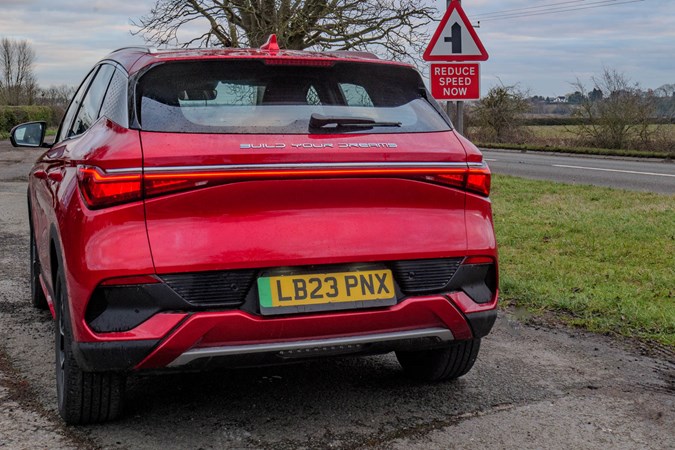
In warmer temperatures, on less degraded roads, the BYD handles quite well for a smaller SUV-styled heavy hatchback. The Atto 3’s deceleration (using regenerative braking), progressive turn in, and decisive power out of bends all flow together for rapid, relaxed progress. It rides imperfections well and feels refined, not out of place in the landscape at all.
The gadgets seem mostly well-thought out and presented as well – my sister’s comments from the passenger seat compared the BYD favourably against the Tesla Model 3 she tends to seek out for holiday rentals. The rotating screen gets a laugh; the interior door handles, bemusement (I think they are more intuitive than Tesla’s buttons).
Yet in denser, extra-urban environments it feels less confident, sometimes scrabbling for grip and riding unexpected imperfections harshly. It highlights just how far other cars have come, as twenty years ago it was second nature to adapt your driving around a car’s quirks. The Atto 3’s suspension is not optimised for the UK yet, but the BYD Seal shows BYD is progressing faster than Korean brands did when they joined the market in the late ’70s and early ’80s.
As an electric car that sells on value it does many things well – cold weather performance overall is very good for the size of battery, it’s capable of sustained high motorway speeds, and it has a distinctive feel, a bit of character. The fundamentals are in place for a car that provides good value for money, and has the less-tangible aspect of being likeable enough to remain satisfying for the whole lease. It’s different enough that if it’s to your taste, you’ll want to go back to BYD for the next one.
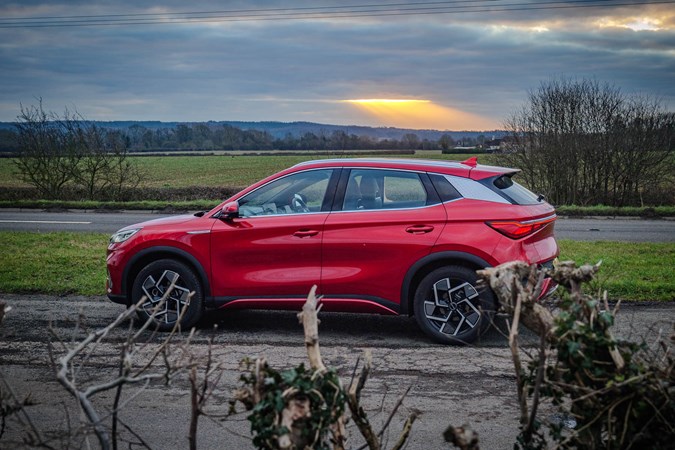
So unlike Alan, who looks for the best engineering and had a frustrating range experience (I think this was resolved by the firmware update that arrived the day after I got the car), I genuinely like the BYD Atto 3 and I’ll miss the curvy, colourful interior and gently-voiced warnings. The last firmware update appeared to refine the lane keeping, speed warnings and adaptive cruise to a very satisfactory standard, too.
However, I am the sort of owner who values a car’s personality and style. As a used car enthusiast, I’m used to driving around quirks in handling or making a bit of extra effort for routine. It’s also easy to appreciate the appeal of leasing new cars with low monthly payments. rather than financing a three-to-five year old second hand car that’s still in new-looking condition, then facing the potential added cost of out of warranty repairs and replacing consumables. I’d happily lease an Atto 3 for peace of mind, then spend cash on a classic car for fun, rather than pay considerably more per month for a new car that fits all my moods and needs.
Firmware updates have definitely improved the Atto 3 experience during the short time I had with it, but it’s the competitive quality of the Seal that highlights the work BYD has to do on the dynamics and depth of its smaller car.













